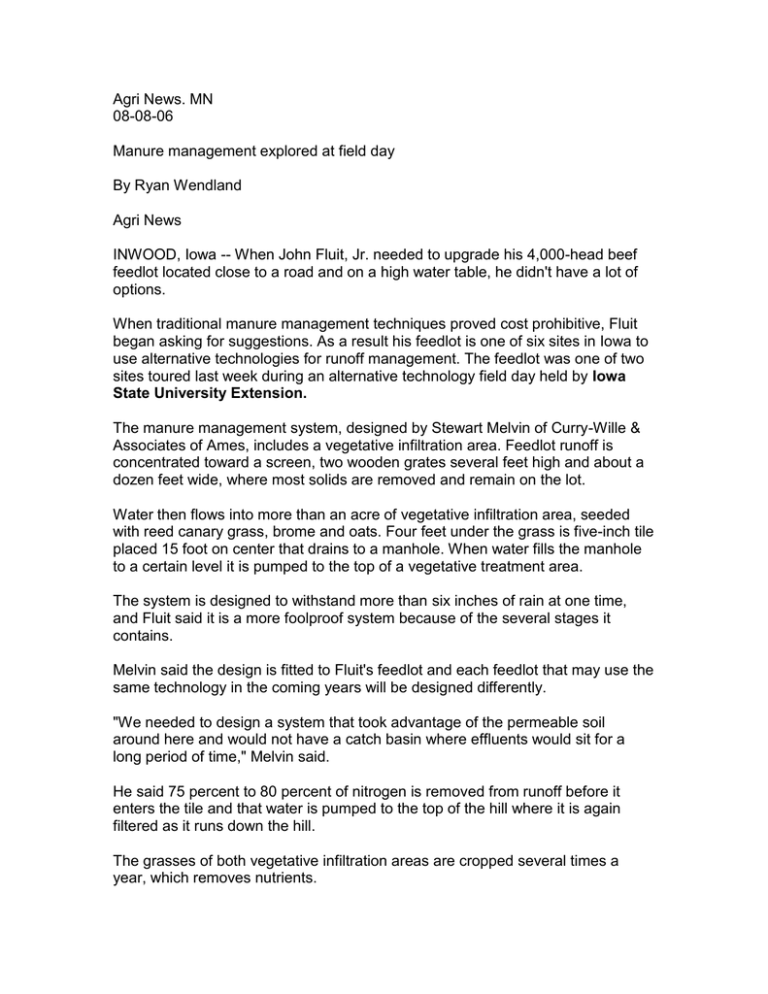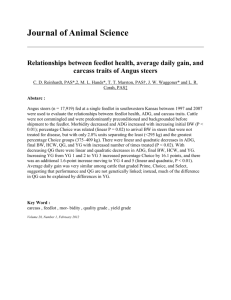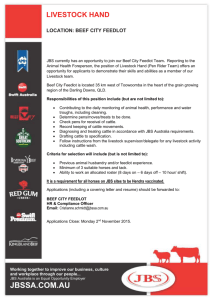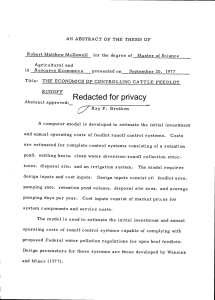Agri News. MN 08-08-06 Manure management explored at field day
advertisement

Agri News. MN 08-08-06 Manure management explored at field day By Ryan Wendland Agri News INWOOD, Iowa -- When John Fluit, Jr. needed to upgrade his 4,000-head beef feedlot located close to a road and on a high water table, he didn't have a lot of options. When traditional manure management techniques proved cost prohibitive, Fluit began asking for suggestions. As a result his feedlot is one of six sites in Iowa to use alternative technologies for runoff management. The feedlot was one of two sites toured last week during an alternative technology field day held by Iowa State University Extension. The manure management system, designed by Stewart Melvin of Curry-Wille & Associates of Ames, includes a vegetative infiltration area. Feedlot runoff is concentrated toward a screen, two wooden grates several feet high and about a dozen feet wide, where most solids are removed and remain on the lot. Water then flows into more than an acre of vegetative infiltration area, seeded with reed canary grass, brome and oats. Four feet under the grass is five-inch tile placed 15 foot on center that drains to a manhole. When water fills the manhole to a certain level it is pumped to the top of a vegetative treatment area. The system is designed to withstand more than six inches of rain at one time, and Fluit said it is a more foolproof system because of the several stages it contains. Melvin said the design is fitted to Fluit's feedlot and each feedlot that may use the same technology in the coming years will be designed differently. "We needed to design a system that took advantage of the permeable soil around here and would not have a catch basin where effluents would sit for a long period of time," Melvin said. He said 75 percent to 80 percent of nitrogen is removed from runoff before it enters the tile and that water is pumped to the top of the hill where it is again filtered as it runs down the hill. The grasses of both vegetative infiltration areas are cropped several times a year, which removes nutrients. Because the system is experimental, experts are not certain how long it will take for the top layer of the vegetative infiltration area to become saturated with nutrients, but Melvin said the area might have to be maintained every five years when the top layer of dirt would be removed and replaced with topsoil.






